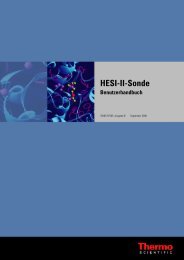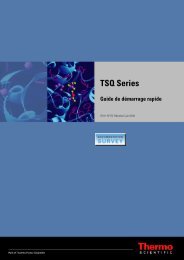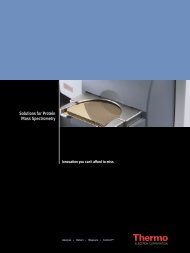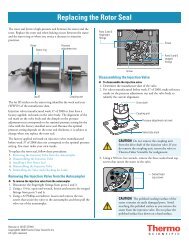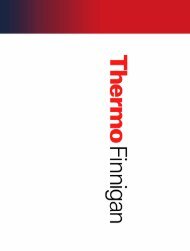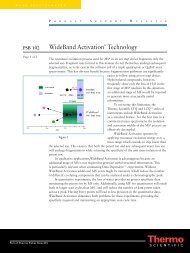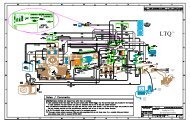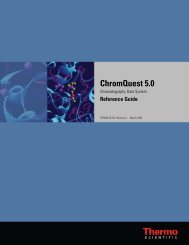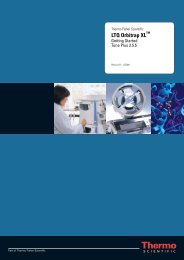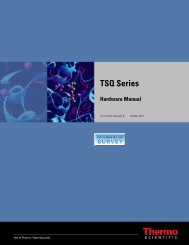SIEVE User Guide
SIEVE User Guide
SIEVE User Guide
Create successful ePaper yourself
Turn your PDF publications into a flip-book with our unique Google optimized e-Paper software.
A Understanding the ChromAlign Process<br />
ChromAlign First Level Alignment<br />
ChromAlign First Level Alignment<br />
Figure 18 shows sample results from the first level ChromAlign process. Some of the major<br />
peaks in the red trace are now aligned with respect to the control sample (for example, see the<br />
peaks at around 35 minutes). <strong>SIEVE</strong> supports comparing 50 chromatograms to another 50<br />
chromatograms, totaling 100 raw data files. <strong>SIEVE</strong> aligns all chromatograms to the first<br />
control file that you chose when originally selecting control and sample files.<br />
Figure 18. ChromAlign first level processing<br />
Abundance<br />
0 50000 100000 150000 200000<br />
0 20 40<br />
Time (Min)<br />
60 80<br />
The following problems can complicate the alignment:<br />
• Both linear and non-linear shifts in the time axis<br />
• Variations in the intensity<br />
• Dynamic-range challenge when aligning low abundance ions in the presence of high<br />
abundance ions<br />
Note Choose a feature-rich chromatographic surface (a chromatogram with good<br />
signal-to-noise ratio) to achieve optimal alignments.<br />
Figure 18 shows the alignment of two chromatographic runs of a digested nine-protein<br />
mixture: horse myoglobin, bovine serum albumin, chicken egg lysozyme, chicken egg<br />
ovalbumin, bovine carbonic anhydrase, bovine ß-casein, horse cytochrome C, bovine<br />
α-lactalbumin, and rabbit glyceraldehyde-3-phosphate dehydrogenase.<br />
30 <strong>SIEVE</strong> <strong>User</strong> <strong>Guide</strong> Thermo Fisher



